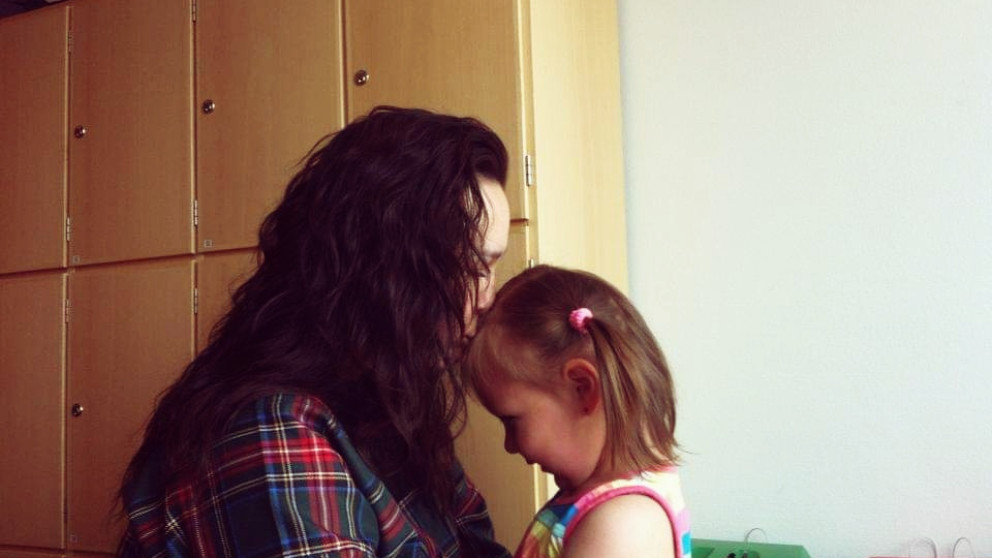Notions of Solidarity, Care, and Responsibility in the Storytelling of Greenlandic Youth
09.10.2024
Young Kalaallit (Greenlandic Inuit) have written stories about their community as part of a research project focussing on memories and visions of the future in the Arctic. In an article for the specialist journal "Études Inuit Studies", project lead Anne Chahine from the Research Institute for Sustainability (RIFS) describes the themes that emerged in these narratives and follow-up interviews with the authors. The practice of storytelling, she concludes, can be understood as a social activity that can be used to mediate conflicts, overcome rifts in society, and develop ideas for future coexistence in Kalaallit Nunaat (Greenland).

"Storytelling is neither an individual nor a straightforward endeavour. It is deeply interwoven with our social environment and contributes to the practice of building relationships and imparting knowledge. The stories of young Kalaallit can help us to understand how relationships are built and communities created in Kalaallit Nunaat," says Chahine. Her study draws on the "memories of the future" created by 28 project participants for future generations. These were published on the website of the project "Future Memory Stories" in English and Kalaallisut.
In her analysis of the texts, Chahine focussed on storytelling as a social activity. "What struck me most about the overall intent of their stories were the gestures of solidarity towards other members of Kalaallit society and the clear positioning of the storytellers, who envisaged their respective roles within their society, formulated shared values, expressed care, and took responsibility. I interpret this to mean that, through their storytelling practice, they wish to resolve conflicts and mend rifts in society by imagining a future state of relationships within the Kalaallit community that is inherently closer." This striving for a state of closeness, for the act of “being close” – in Kalaallisut “qanilaarneq” – runs through the stories.
"You are not alone"
Arnannguaq Autzen’s "I Want to Take Action - Iliuuseqarusuppunga", in which she reflects on her role in the changing society of the Kalaallit, offers an example of this striving for closeness and community. Autzen positions her story in the context of the Danification of the 1950s and 1960s, which led to many social problems. Autzen writes of her conviction that change is possible in this time and of her desire to take action. She addresses her compatriots with a clear message: "I want to be the voice that helps people get on the right track." The text is accompanied by a photograph of the author as a small child holding her grandmother's hand. Autzen describes the image as a symbol of her own development, of the care of the older generations for the younger ones. Addressing her readers, Autzen writes: “I would like to take your hand and show you that you are not alone.”
This sentiment is expressed in several of the stories. Tattooist Paninnguaq Lind Jensen writes about the problems many people in Kalaallit Nunaat have in finding their identity as Danes and Kalaallit in the face of colonial history. “People use tattooing as a way to clean up the mess that this has created inside their souls. They are claiming their identity as a mixed person.” Maannguaq Rosing’s narrative "Qanilaarneq" (closeness) – a term that defines young Kalaallit aspirations, Chahine suggests – is accompanied by a photograph of Rosing leaning over to her niece and pressing a kiss to the top of her head. The image captures a kind of closeness, Chahine says, that requires complete attention, a willingness to fully engage in the moment of embrace.
Understanding, but not afraid of conflict
"My 'listening practices' are multimodal and seek to create connections between the narrators and the multimedia content they contribute. Reading these different modalities, or modes of representation, reveals a web-like structure that is characterised by deeply rooted notions of community," explains Chahine. Stories served as a means of communicating the need and willingness to overcome pressing social problems by involving oneself as an agent of change and actively mediating these conflicts. The result is a shared, understanding mindset, a willingness to tackle oft-ignored problems, and the notion of a community that speaks with one voice while recognising the complexity of the colonial present.
Dialogue also played an important part in Chahine’s work and she shared her analyses of the narratives and initial drafts of her paper with the storytellers and other Kalaallit advisors, refining her work based on their feedback and insights.
Chahine, A.S. (2023). Qanilaarneq (Closeness/Being Close) as a Desired State: Mediating Conflict Through Storytelling in Kalaallit Nunaat (Greenland). Études Inuit Studies, Volume 47, numéro 1-2, 2023, p. 65–91, https://doi.org/10.7202/1113384ar (Published 11 September 2024)
Contact

